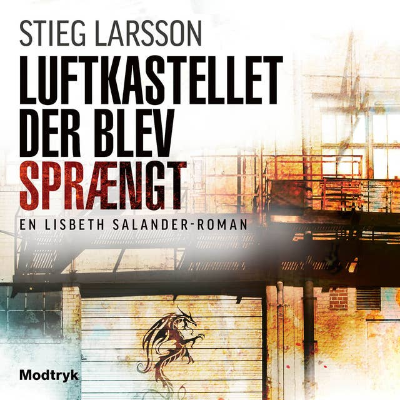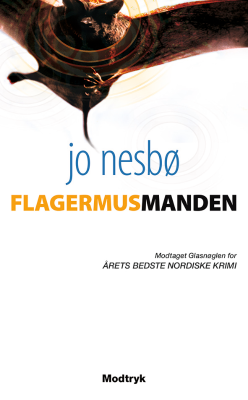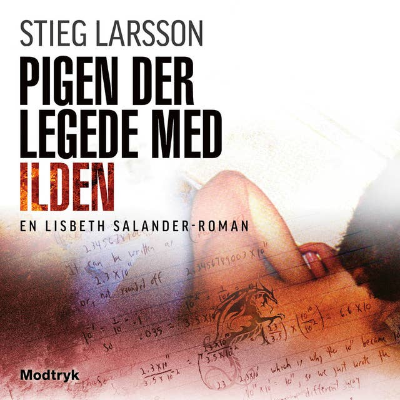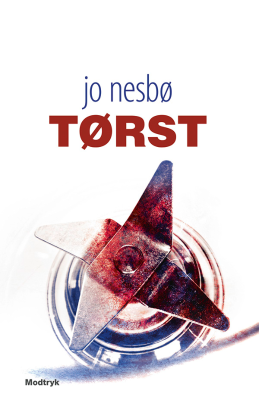
Fasts and Feasts
Podcast af Jared Henderson
Begrænset tilbud
2 måneder kun 1 kr.
Derefter 99 kr. / månedIngen binding.

Mere end 1 million lyttere
Du vil elske Podimo, og du er ikke alene
Rated 4.7 in the App Store
Læs mere Fasts and Feasts
A guided tour through the Church’s Calendar of saints, seasons, fasts, and feasts.
Alle episoder
11 episoderWelcome to Fasts and Feasts, a guided tour of the church year. I'm your host, Jared Henderson, and today we are celebrating the Conversion of Saint Paul.It has been awhile since we've had an episode of Fasts and Feasts. For those of you in churches like The Episcopal Church or the Anglican Church in North America, you might think that I have been skipping some days. If you're following the calendars of either of those churches, you might have been expecting episodes for The Baptism of Jesus or the Confession of St Peter. But neither of those is on the 1662 calendar, so I haven't been making episodes.This brings us to a small point that's worth addressing. There are many different calendars, and this naturally brings us to the question of 'Which is best?' And I want to encourage anyone who is listening to this and learning about the church year to refrain from that kind of thinking. 'Best' isn't really the right category.The calendar serves three purposes: 1. It teaches us about the history of salvation and the history of the church. 2. It structures our worship. 3. It honors the saints who came before us. In truth, many different versions of the church calendar could serve all three of those purposes. This is why I don't think there is much reason for us to choose a 'best' one. In general, just use whichever calendar the church you attend has adopted. So Catholics should follow the Roman calendar, Orthodox the Eastern calendar, etc. If you're following the calendar in your own devotions, I recommend the 1662 because of its relative simplicity.Now let's move on to talk about the Conversion of Saint Paul. Many of you will know of Paul from the Pauline epistles, which make up the bulk of the New Testament. And you will know his life's story from the book of Acts.In Acts, we see that Paul was a persecutor of the church. Paul killed Christians! When he saw Stephen stoned to death, he was pleased. And yet, on his journey to Damascus Paul saw a light. Jesus appears to Paul, and Paul quickly confesses Jesus as Lord. And so Paul converts. He goes on to study for several years, and then Paul becomes apostle to the gentiles. He becomes a radical missionary for Jesus Christ, preaching to both Jew and Greek. He goes on to write the letter to the Romans, one of the clearest expressions of the Gospel ever written. And he suffers for the Gospel, enduring prison, legal trials, and persecution.Paul, we can say, embodies what it means to be converted. He is proof that Jesus Christ can choose the worst of sinners — literally men who killed early Christians and delighted in doing so — and make them the best of Christians. If you have ever thought that your sins are too great, remember Paul.Paul also exemplifies the fact that Christ did not come to abolish the Law — the way of following God according to the Old Covenant — but to fulfill it. After converting, Paul never saw the worship of Jesus Christ as inconsistent with his Jewish faithfulness. He sees the Way of Jesus as the fulfillment of all that has come before.As always, let's close with a collect from the 1662 Book of Common Prayer:O GOD, who, through the preaching of the blessed Apostle Saint Paul, hast caused the light of the Gospel to shine throughout the world: Grant, we beseech thee, that we, having his wonderful conversion in remembrance, may shew forth our thankfulness unto thee for the same, by following the holy doctrine which he taught; through Jesus Christ our Lord. Amen.★ Support this podcast on Patreon ★ [https://patreon.com/jaredhenderson]
Transcript Welcome to Fasts and Feasts, a guided tour of the church year. I'm your host, Jared Henderson. Today we're celebrating the Epiphany.Epiphany marks the close of the 12 days of the Christmas season, so it is finally time to take the Christmas tree, stop lighting candles and turning on your Christmas lights, and time to put away the carols for another 11 months or so. There is some disagreement in the Western church about whether Epiphany is a day or a season. In Anglican churches, generally, it is merely a day, but some other Protestant churches celebrate it as a season. The Roman Catholic Church celebrates Christmas a bit longer, taking Epiphany to be a proper subset of the Christmas season. But those are calendar quibbles, and we don't need to focus too much on those. Let's try to focus on the 'reason for the season' — the life and work of Jesus. Epiphany celebrates the coming of the Magi as told in the story of Matthew 2:Now after Jesus was born in Bethlehem of Judea in the days of Herod the king, behold, wise men from the east came to Jerusalem, saying, “Where is he who has been born king of the Jews? For we saw his star when it rose and have come to worship him.” When Herod the king heard this, he was troubled, and all Jerusalem with him; and assembling all the chief priests and scribes of the people, he inquired of them where the Christ was to be born. ****They told him, “In Bethlehem of Judea, for so it is written by the prophet: “‘And you, O Bethlehem, in the land of Judah, are by no means least among the rulers of Judah; for from you shall come a ruler who will shepherd my people Israel.’” Then Herod summoned the wise men secretly and ascertained from them what time the star had appeared. And he sent them to Bethlehem, saying, “Go and search diligently for the child, and when you have found him, bring me word, that I too may come and worship him.” ****After listening to the king, they went on their way. And behold, the star that they had seen when it rose went before them until it came to rest over the place where the child was. ****When they saw the star, they rejoiced exceedingly with great joy. ****And going into the house, they saw the child with Mary his mother, and they fell down and worshiped him. Then, opening their treasures, they offered him gifts, gold and frankincense and myrrh. ****And being warned in a dream not to return to Herod, they departed to their own country by another way.This is a really cool story, because it tells us a few important things about Jesus. For one, Jesus' birth was foretold — not just by the prophets of Israel, but by the stars. The magi, the wise men, were able to tell that the king of the Jews was to be born. All of creation heralded the arrival of the newborn king. Second, the revelation of Jesus was known to more than just the Jews. There is no indication that the wise men are Jewish, and in fact the text strongly suggests they are Gentiles. So we have a heralding of the opening of the new covenant — as Simeon will put later, Jesus is a light to enlighten the Gentiles. Third, we see earthly authorities either submitting to Jesus or attempting to overthrow him and his rule. Those who submit we remember as wise men; we honor them. Those who attempt to overthrow, like Herod, are remember with scorn. There is a powerful message here: Jesus truly is King of Kings, and he will brook no challengers to his throne. But followers and subjects will be blessed! There are many traditions that go with Epiphany, such as chalking the doors or having one's house blessed. There are also many great songs — such as 'We Three Kings.' That brings us to a fun fact about Epiphany and the story it celebrates. We sing of three kings, but the Biblical text does not number the wise men. It numbers the gifts. Now, traditionally it is believed that there were three kings, one for each gift, but this is a matter on which the Gospels are silent. So while I don't necessarily believe there were three kings exactly (I am officially agnostic on this issue), I have no problem singing 'We Three Kings.' CollectAlright friends — let's close with a collect from the 1662 Book of Common Prayer.O GOD, who by the leading of a star didst manifest thy only-begotten Son to the Gentiles: Mercifully grant, that we, which know thee now by faith, may after this life have the fruition of thy glorious Godhead; through Jesus Christ our Lord. Amen.★ Support this podcast on Patreon ★ [https://patreon.com/jaredhenderson]
Transcript Welcome to Fasts and Feasts, a guided tour of the Church year. I'm your host, Jared Henderson. Today I'm teaching you about the Circumcision and Holy Name of Jesus Christ. Today's episode has a complicated history. You see, for a long time there has been a feast on January 1, which for Western Churches also marks the eighth day of Christmas. This feast in the 1662 Book of Common Prayer was called The Circumcision of Christ. However, the name and theme of this feast has changed quite a bit over time. The Roman Catholic Church takes January 1 as the Solemnity of Mary, and in 1979 the Episcopal Church renamed the feast to be the Holy Name. In 2000 the Church of England released Common Worship, a book of alternative prayers and services, calling the feast 'The Naming and Circumcision of Jesus Christ.' The Anglican Church in North America did something weird in response in 2019, calling the January 1 feast 'The Holy Name and Circumcision of Our Lord Jesus Christ.' This is an interesting case where Protestant churches in the West are more in line with Eastern practice than with Roman practice, as Eastern Orthodox and Byzantine Catholic churches celebrate the Circumcision (though they do it on other days). I find the renaming quibbles to be tiresome, and I don't want this weird history to distract us from the feast. This is a feast explicitly about Jesus, so let's try to keep the focus on Him. Under the Law, passed down by God to the people of Israel, all Jewish boys were to be circumcised. Traditionally this circumcision accompanied the naming of the boy, and it occurred on the eighth day after birth. The canonical reference for this would be Luke 2:21.Why do we focus on this event so much if it only takes up a single verse of the Bible? Well, sometimes big events get short descriptions, and we're called to extract meaning and, following the example of Mary the Mother of God, treasuring them and pondering them in our hearts.I want to talk briefly about the significance of Jesus being circumcised and, later, presented at the temple. Jesus is said to have been in perfect obedience to the Law. And this is a good thing, because if Jesus were to violate the Law, then we would have a strong case that Jesus isn't God — after all, we'd have God making the rules and then breaking the rules. Instead, we have a savior who takes on our human nature, becomes incarnate in a particular place and time, and perfectly follows' God's commands. That includes being circumcised. By being circumcised, Jesus as a young Jewish boy is given the sign of the covenant of Abraham. By being circumcised, Jesus tells us he is not here to replace or overthrow Judaism; Jesus is here to fulfill it. Jesus will eventually be baptized, giving us a new rite of initiation into the new covenant, but we will talk about that later. For now, we can say that Jesus' circumcision is great example of his general obedience to the Law. Getting clear on the grace of the Law is essential for a Biblical understanding of Jesus' life, ministry, and role as savior and Lord.We never want to confuse Law and Gospel, but we should always be clear about the connection between Law and grace. The Law was given to the people of Israel by God to allow them to structure their lives together and to grow in faith. This is grace! And we shouldn't forget that. Jesus' obedience to the Law helps remind us. A closing collect ALMIGHTY God, who madest thy blessed Son to be circumcised, and obedient to the law for man; Grant us the true circumcision of the Spirit; that, our hearts, and all our members, being mortified from all worldly and carnal lusts, we may in all things obey thy blessed will; through the same thy Son Jesus Christ our Lord. Amen.★ Support this podcast on Patreon ★ [https://patreon.com/jaredhenderson]
Today we honor the Holy Innocents. Transcript Welcome to Fasts and Feasts, a guided tour of the church year. I'm your host, Jared Henderson, and today I'll be teaching you about the Holy Innocents. Keen listeners will notice that this episode is coming out in the afternoon of December 28, while episodes usually come out early in the mornings. Allow me to make a minor confession: I fell a bit behind. After all, we have had four feasts in a row — that is a lot of episodes! But today is the last feast in this series. Today, we are celebrating the Holy Innocents. Who are the Holy Innocents? We get one mention of them in the Gospel of Matthew:Then Herod, when he saw that he had been tricked by the wise men, became furious, and he sent and killed all the male children in Bethlehem and in all that region who were two years old or under, according to the time that he had ascertained from the wise men. Then was fulfilled what was spoken by the prophet Jeremiah: “A voice was heard in Ramah, weeping and loud lamentation, Rachel weeping for her children; she refused to be comforted, because they are no more.”The Holy Innocents are martyrs -- but they are martyrs in deed rather than will as an old saying goes. They are children who were slaughtered as Herod, an earthly king, attempted to prevent the coming of King Jesus. Of course, it doesn't work. There are strong historical and theological parallels here with the story of Moses. In the Reformation Study Bible, which is a study Bible I quite like, the commenters say of this passage in Matthew that Matthew’s use of this prophecy appears to portray Jesus as a new Moses (the one who led Joseph’s descendants out of Egypt) who fulfills the prophecy of a second exodus. Like Moses, Jesus escapes slaughter as an infant. Like Moses, He is sent to rescue God’s chosen ones. This is a great example of how God can use evil for good. God is not the author of evil, but nothing in this world can resist being used for the glory of God — this is one of my deepest theological convictions. Herod, desperate to cling to power, orders the slaughter of precious children — and God uses this to further reveal Jesus' role as a new Moses, leading God's exiled children out of Egypt and into the promised land. Every feast is, ultimately, about God. Even those where we honor saints like John the Apostle or martyrs like the Holy Innocents, we are ultiamtely honoring and celebrating the Father, the Son, and the Holy Spirit. The Holy Innocents is no exception. God shows us his glory even in tragedy. Alright friend -- as always, let's close with a collect from the 1662 Book of Common Prayer:O ALMIGHTY God, who out of the mouths of babes and sucklings hast ordained strength, and madest infants to glorify thee by their deaths: Mortify and kill all vices in us, and so strengthen us by thy grace, that by the innocency of our lives, and constancy of our faith, even unto death, we may glorify thy holy Name; through Jesus Christ our Lord. Amen.★ Support this podcast on Patreon ★ [https://patreon.com/jaredhenderson]
On Dec 27 the Church celebrates St John. Transcript Welcome to Fasts and Feasts, a guided tour of the church year. I'm your host, Jared Henderson, and today I'm teaching you about St John the Apostle and Evangelist. The Gospel — the term, that is — comes from the Greek word for 'good news', which in Latin is translated as evangelium; that term is at the root of the word 'evangelical', and it also gives rise to a title: 'evangelist.' But in Church history, 'Evangelist' is a title for four men: Matthew, Mark, Luke, and John. We call these men the Evangelists because they wrote down the Good News in the four canonical Gospels. Today, we're learning about one of them: the Apostle John. John the Apostle is one 12 apostles, that inner circle of Jesus' followers, but he is also the writer of the Gospel of John. The Gospel of John makes elliptical references to John as its author, calling him 'the disciple Jesus loved.' I'll note here that taking John the Apostle to be the author of the Gospel of John and the rest of the Johannine literature is not uncontroversial in church history, but that the West's traditional consensus says John the Apostle and John of Patmos are the same John; thus, John the Presbyter (a posited figure in church history) is an unnecessary bit of speculation from this perspective. We don't have a lot of rock solid information about John's life, and so today I want to focus on his greatest work: the Gospel of John. Remember that each Gospel is a retelling of Jesus' life and ministry, and each one is written for a particular audience and is addressing particular questions. The Gospel of John is written, it seems, primarily for a Greek audience, and it utilizes Greek philosophical categories to make sense of the claim that Jesus is God. One of my favorite passages of the Bible comes so early in the Gospel of John: "And the Word became flesh and dwelt among us, and we have seen his glory, glory as of the only Son from the Father, full of grace and truth."Of course, many listeners will be thinking of another verse from John as one of their favorites — namely, John 3:16. It is one verse I'll probably never forget: For God so loved the world that he gave his only begotten Son, that whosoever believeth in him shall not perish but have everlasting life." John's Gospel is a dense piece of philosophy, but it is also part of the Good News. That's why it is a Gospel! As we go through this church year together, we'll say a bit about each Gospel, hopefully letting us better appreciate the gift that God has given us by telling us the story of Jesus in four different ways. A closing collectMERCIFUL Lord, we beseech thee to cast thy bright beams of light upon thy Church, that it being enlightened by the doctrine of thy blessed Apostle and Evangelist Saint John may so walk in the light of thy truth, that it may at length attain to the light of everlasting life; through Jesus Christ our Lord. Amen.★ Support this podcast on Patreon ★ [https://patreon.com/jaredhenderson]

Rated 4.7 in the App Store
Begrænset tilbud
2 måneder kun 1 kr.
Derefter 99 kr. / månedIngen binding.
Eksklusive podcasts
Uden reklamer
Gratis podcasts
Lydbøger
20 timer / måned

































